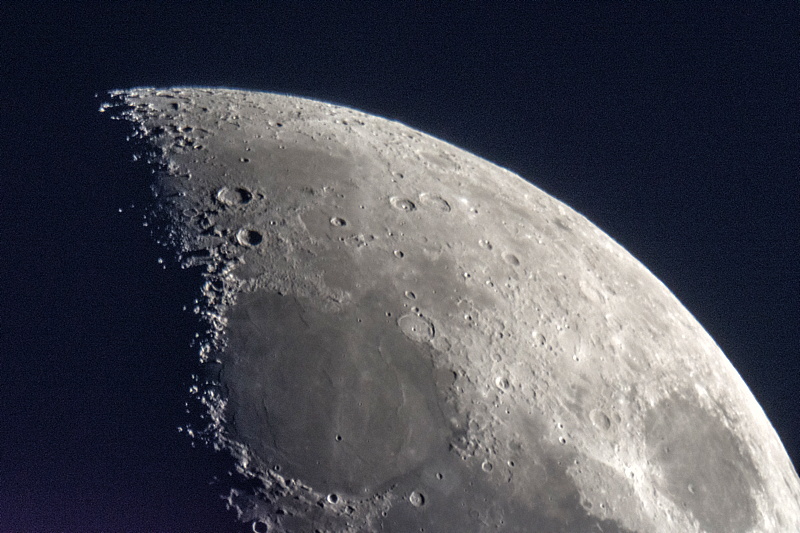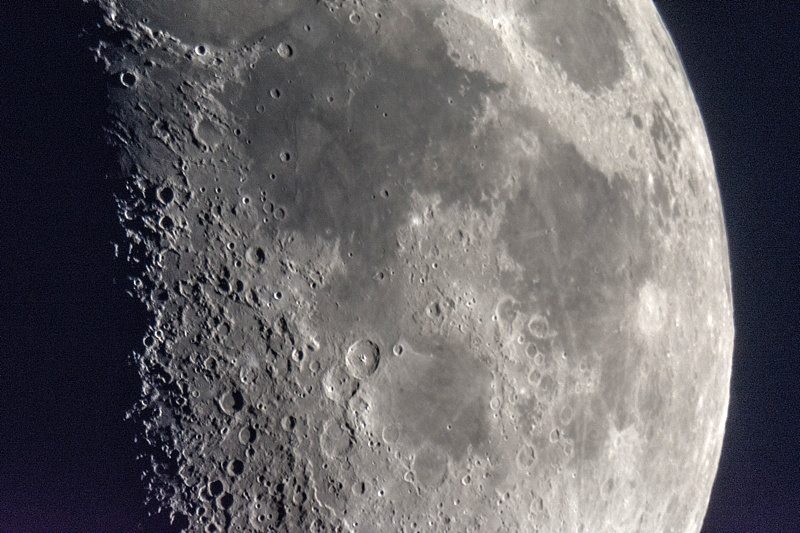Arizona Flag Sunset; DSLR Lunar Imaging
Posted: 10 August 2016
As I was preparing and posting my previous report on the morning of Tuesday, 9 August 2016, a Monsoon storm arrived with some rain (0.05") and lots of frequent lightning and thunder. Parts of Tucson received >2" rain from the storm. The forecast for Tuesday night was continued storminess, but surprisingly the sky became mostly clear as sunset approached. Since more storms were in the forecasts for the next several days and nights, I decided to take advantage of the opportunity and opened the observatory.
|
Open: Tuesday, 9 August 2016, 1831 MST Temperature: 92°F |
Session: 1005 Conditions: Mostly clear |
Equipment Used:
12" f/8 LX600 w/StarLock
Wired AutoStar II handset
2" 24mm UWA eyepiece
2" 2X PowerMate
Camera:
D7200 DSLR
1836 MST: LX600 ON, StarLock OFF, High Precision OFF.
Viewed the Moon, 102X. Clouds overhead began increasing. Began setting up for 12" telescope prime focus imaging of the Moon using the Nikon D7200 DSLR. Mounted the camera at prime focus using the Third Planet Optics camera adapter.
This is a 1/500sec, ISO 400, exposure showing the Moon against the blue sky about 35 minutes before sunset:

1854 MST: the clouds overhead were decreasing but the humidity was so high that my logbook papers were getting damp.
1908 MST: a lonely funny shaped Monsoon storm cloud was seen in the south. This is an iPhone 6s Plus photo showing the cloud and the Moon:

The sky was now mostly clear again, but there were lots of Monsoon clouds along much of the horizon. As sunset approached I noticed that the western sky was taking on the look of the Arizona Flag. I managed to get an iPhone photo of it:

1917 MST: sunset. Began imaging the Moon with the 12" telescope and DSLR. This is a prime focus, 1/320sec, ISO 400, image:

Added the 2X PowerMate for this series of images at ISO 1600 and 1/320sec, 1/400sec, and 1/250sec, respectively:



1932 MST: removed the camera and did some lunar observing, 203X. There were some nice sights.
I then began viewing the visible planets, 203X. First was Venus, low in the western sky. The planet's disk was visible but it was too low in the sky for good viewing. Mercury was higher and the half-phase was visible. Jupiter suffered from bad seeing but the North and South Equatorial cloud bands were visible along with the four Galilean Moons. Mars also suffered from bad seeing but some details were visible. Saturn was the best view with Cassini Division, some cloud bands, and 4 moons visible.
Since the seeing was so bad and the humidity so high I decided to close up. But it was nice to be in the observatory for this unexpected session.
|
Close: Tuesday, 9 August 2016, 2003 MST Temperature: 77°F |
Session Length: 1h 32m Conditions: Mostly clear, 63% humidity |
Comments are welcome using Email. Twitter users can use the button below to tweet this report to your followers. Thanks.
Cassiopeia Observatory Home Page
Copyright ©2016 Michael L. Weasner / mweasner@me.com
URL = http://www.weasner.com/co/Reports/2016/08/10/index.html
